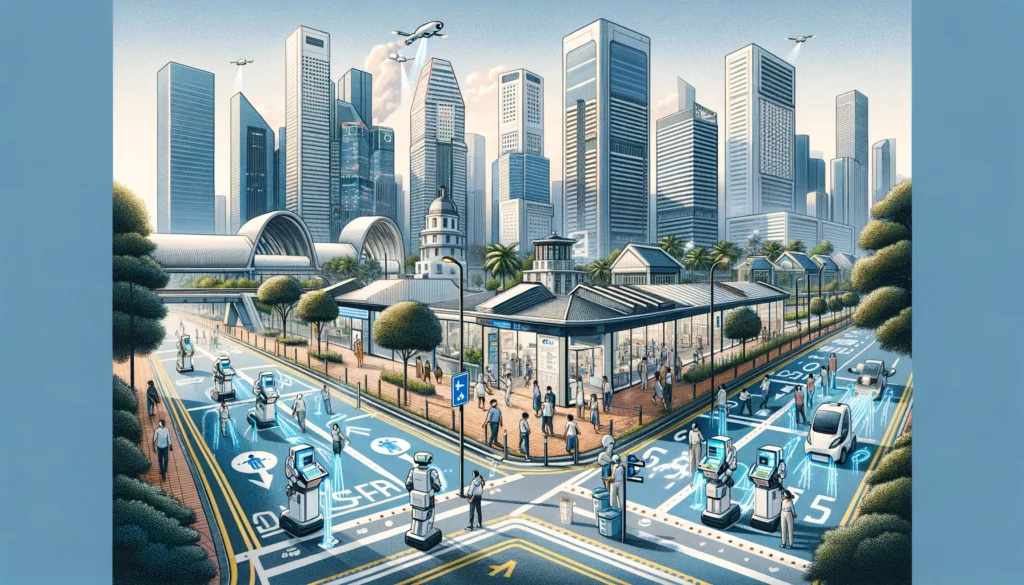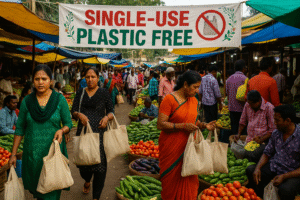In a time when urban centers house over half the global population—a number expected to rise to 70% by 2050—the urgency to develop cities that are resilient, sustainable, and prepared for the future has reached a critical point. These future-proof cities, with their commitment to sustainable practices, robust infrastructure, technological innovation, and economic diversity, stand at the vanguard of addressing the multifaceted challenges posed by rapid urbanization, climate change, and emerging technologies like Infrastructure Strain, Resource Scarcity, Rising Sea Levels, Increased Frequency of Extreme Weather Events, Cybersecurity Threats, Digital Divide, etc. This blog explores the concept of future-proof cities, emphasizing the necessity of integrating resilience into the urban landscape to foster enduring development.
The Case of Singapore
Singapore exemplifies the essence of a future-proof city through its exemplary response to the COVID-19 pandemic. The city-state’s comprehensive approach included the SG Clean campaign to enhance sanitation practices, a broad network of healthcare facilities for coordinated public health efforts, and a significant reserve of personal protective gear. Moreover, Singapore’s investment in digital infrastructure was crucial, facilitating the quick launch of user-friendly apps and online services during the pandemic. Singapore’s experience underscores the importance of technological preparedness in bolstering a city’s resilience against unpredictable crises.

Deloitte’s Four Key Capabilities
Deloitte highlights four essential attributes for fostering urban resilience: nimbleness, scalability, stability, and optionality. As detailed in “The Transformation Myth: Leading Your Organization Into an Uncertain Future” by Jonathan R. Kane, Copulsky, and Anh Phillips (published by Deloitte on September 28, 2021), these attributes are crucial for cities to efficiently prepare for, manage, recover from, and adapt to disruptive events. Building these capabilities is a long-term endeavor, demanding consistent dedication across various urban sectors and disciplines.
Holistic Approach to Future-Proofing Cities
The strategy for crafting future-proof cities involves a comprehensive approach that integrates sustainability, resilient infrastructure, advanced technology, and economic diversification. This broad-based strategy aims to ensure that urban areas are not only capable of confronting future challenges but also evolve into spaces that are more sustainable, livable, and adaptable.

Conclusion
The push towards future-proof cities is both a critical need and a significant opportunity. As we face a future characterized by heightened urbanization and environmental pressures, the initiatives led by pioneers like Singapore, coupled with strategic insights from Deloitte, chart a course toward a resilient, sustainable urban future. Embracing this vision is vital for our collective well-being, pushing us to develop cities that can endure and flourish in the face of tomorrow’s challenges.
Guidance for Next Part
- Technological Innovations and Digital Infrastructure: Delve deeper into the specific technologies enhancing urban resilience, discussing their applications and impacts in detail.
- Case Studies of Other Cities: Explore examples of other cities that have effectively implemented future-proofing strategies, showcasing the variety of approaches and results.
- Community and Stakeholder Engagement: Examine the significance of engaging communities and stakeholders in future-proofing efforts, highlighting the benefits of participatory planning and inclusive decision-making.
This approach offers a comprehensive look into the concept of future-proofing cities, illustrated by Singapore’s success story, guided by Deloitte’s resilience-building capabilities, and envisioning a holistic strategy for urban sustainability and adaptability.
Author’s Note
As the architect of this narrative on future-proof cities, my journey through the labyrinth of urban resilience, technological innovation, and sustainable development has been both enlightening and inspiring.
This exploration is but a glimpse into the vast potential of urban areas to evolve in harmony with the demands of the future. It is a call to action for policymakers, urban planners, and citizens alike, urging a collaborative push toward resilience, sustainability, and inclusivity.
G.C., Ecosociosphere contributor.
References
- “Future-Proofing Cities: Four Capabilities for Resilient Urban Areas.” Deloitte. This source provided a foundational understanding of the capabilities required for building resilience in cities, informing the segment on Deloitte’s four key capabilities.
- “Why We Need to Future-Proof Our Cities for Sustainability.” EY. This article offered insights into the holistic approach necessary for future-proofing cities, emphasizing the integration of sustainability, infrastructure, technology, and economic diversification.
- The example of Singapore’s response to the COVID-19 pandemic and its strategies for future-proofing was based on publicly available information and highlights the importance of resilience in public health systems, IT infrastructure, and supply chains.





Comments
Your article helped me a lot, is there any more related content? Thanks!
I don’t think the title of your article matches the content lol. Just kidding, mainly because I had some doubts after reading the article.
Your article helped me a lot, is there any more related content? Thanks!
Thank you for your sharing. I am worried that I lack creative ideas. It is your article that makes me full of hope. Thank you. But, I have a question, can you help me?
Can you be more specific about the content of your article? After reading it, I still have some doubts. Hope you can help me.
Thanks for sharing. I read many of your blog posts, cool, your blog is very good.
Your point of view caught my eye and was very interesting. Thanks. I have a question for you.
Your article helped me a lot, is there any more related content? Thanks!